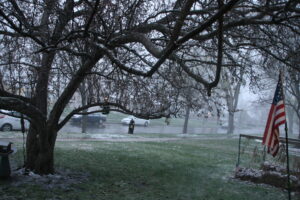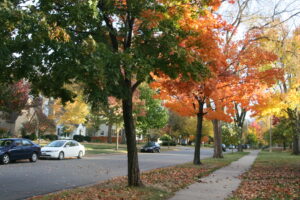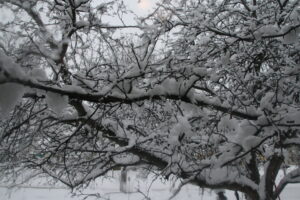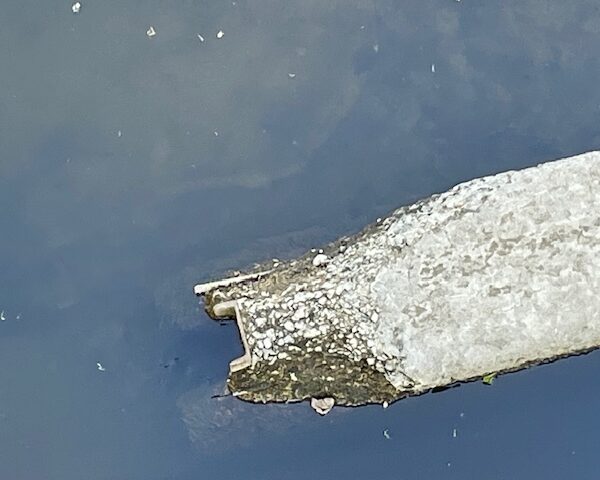 BY STEPHANIE FOX
BY STEPHANIE FOX
As spring slowly arrives in the North, an arborist’s fancy turns to thoughts of trees. It’s true for Jake MacDougall, who works for Davey Tree Expert Company — at 145 years, the oldest tree company in the country. Davey Tree has offices in every state except of Alaska. In the Twin Cities, the company has several locations and MacDougall says tree owners here need to know what to do to keep their trees in the best of health.
“Spring is the end of the dormant season. While pruning all summer is fine, right now in the spring, for most trees it’s a perfect time for pruning, before the trees leaf out,” he said. “If a tree needs to shed a branch, we prune them now so that the tree can focus on the healthy part of the tree.”
“At this time of year, we focus on the diagnostic and assess for any treatment trees need in the growing season. We look for insect damage from mites and scale insects, particularly in ornamental trees such as crab apples and magnolias.”
MacDougall warns against pruning most trees in the winter. “Trees need all their strength to survive a Minnesota winter,” he said. “Evergreens — never, ever prune in the winter. That’s best in the spring. But don’t prune maple trees in the spring. That weakens the tree as the sap is starting to run. And oak trees are best pruned in the dead of winter.”
In Minnesota, according to the University of Minnesota Extension service, scale insects feed on the tissue of trees and shrubs and can disrupt how materials go through tree limbs, causing branches to die. A large-scale infestation can cause entire plants to die. But just a few dying limbs is often the first sign that there is a problem.
We focus on targeted treatment, MacDougall said. We want to take care of the problem early and not have a residual problem.
 There are other signs to look for in the spring. Check for browning of needles on evergreens. In some areas, deer may cause damage when nibbling on plants. And salt used to melt ice in the winter on sidewalks and streets can injure trees and other plants.
There are other signs to look for in the spring. Check for browning of needles on evergreens. In some areas, deer may cause damage when nibbling on plants. And salt used to melt ice in the winter on sidewalks and streets can injure trees and other plants.
Other problems for local trees are the emerald ash bore, which arrived in Minnesota in 2009, (although there is some evidence that it actually arrived in 2004), and the invasive two-lined chestnut borer, a Minnesota native, which can attack a variety of oak trees, especially red oaks. Both of these can kill trees.
Both infestations are best treated by prevention, which can be very effective, he said. For ash trees, arborists can inject a tree to destroy any insects that may have invaded the tree. This does not require the spraying of any chemicals. For chestnut trees, arborists also recommend insecticide treatments targeted in the spring, usually in May or June. Homeowners should also avoid mulching oak trees and turf grass fertilizers. Once these trees are infested, they can often die.
Experts also say that moving firewood from areas where the insects are more common is one of the most common ways to spread the infestations.
MacDougall advises that tree owners pay attention to changes from one year to another. If the tree is dropping leaves in the spring, then that’s an indication that the tree is stressed.
 He recommends that if a problem is suspected, there are some tests tree owners can do to see if something is seriously wrong with a tree. “Start low on the tree, where it meets the ground. Look for mushrooms, soft spots or missing bark,” he advises. “Use your finger or a small knife and scratch the smallest branches. If it’s green underneath, that’s good. Green means go. If it’s brown, that branch is dead. Check multiple spots that way. You’ll need a half a dozen of these tests give you’re the big picture. They should be green and growing.”
He recommends that if a problem is suspected, there are some tests tree owners can do to see if something is seriously wrong with a tree. “Start low on the tree, where it meets the ground. Look for mushrooms, soft spots or missing bark,” he advises. “Use your finger or a small knife and scratch the smallest branches. If it’s green underneath, that’s good. Green means go. If it’s brown, that branch is dead. Check multiple spots that way. You’ll need a half a dozen of these tests give you’re the big picture. They should be green and growing.”
He advises that if you aren’t finding green growing areas, then look for large cracks. “Check the branches. Is the bark falling off or are mushrooms growing on branches? Sometimes these mushrooms look like shells growing on the tree. If you see these, call an expert.”
“Most tree companies hire certified arborists, and they’ll come out and look at your tree for no charge,” he said.
MacDougall started in the tree business working with the Civilian Conservation Corps as a volunteer. “I really enjoyed it and wanted to make it a career. I signed up with the Midstate Technical College and worked as an intern learning tree identification, diagnosis and proper pruning.” He qualified for certification through the International Society of Arboriculture and has been working keeping trees healthy since 2016.
 Climate change and warmer temperatures are allowing people to plant a greater variety of trees, he said, but he worries about the drought. “Less rain has been harder for trees in the last few years. I think it will continue to evolve. I hope we get more rains. We’re even missing snow. If we don’t have a lot to melt it makes the start of the season stressful for trees.
Climate change and warmer temperatures are allowing people to plant a greater variety of trees, he said, but he worries about the drought. “Less rain has been harder for trees in the last few years. I think it will continue to evolve. I hope we get more rains. We’re even missing snow. If we don’t have a lot to melt it makes the start of the season stressful for trees.
“As the weather is turning into spring, instead of enjoying the plants and trees about to wake from their winter hibernation, I see people cutting down healthy trees,” he said. “Across the street from me a beautiful, healthy elm tree that survived the Dutch Elm Disease has now been taken down. So many trees are being cut down due to the Emerald Ash Borer. I ask people to please do the planet and the community a favor and try to keep your trees.”






















